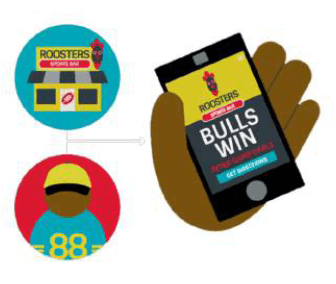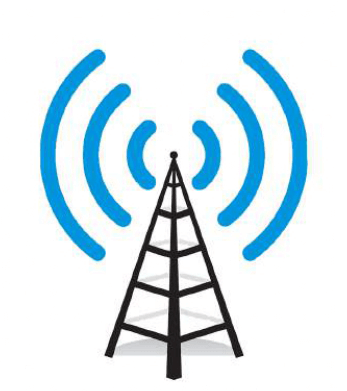21 GRAVE GEOFENCING
ADVERTISING ERRORS
COMPANIES MAKE
And How To Avoid Them


21 GEOFENCING ERRORS COMPANIES MAKE
Being Able To Geofence Not Enough
After running many geofencing advertising campaigns for agencies and direct clients, we’ve seen it all. Campaigns with bad geofencing locations. Campaigns simply paused and not even active. Audience pools that should reset every 1 week versus 30 days. Most enterprises expect to see campaigns built with precision and success, but there are still hiccups that can inhibit the success of programmatic geofencing campaigns.
In addition to the successes many organizations experience with geofencing advertising, it’s critical to consider the errors and pitfalls made in building geofencing campaigns in order to help prevent those same mistakes from happening in any future campaigns you run with
anygeofencing provider.

Not Thinking Through The Entire Customer Journey
Many advertisers as well as agencies do not think about the entire customer journey before building a geofencing campaign. It may sound hyperbolic, but many campaigns fail for this reason alone. We’ve had painters insist on geofencing highways. Dentists insist on geofencing an entire city (which defeats the purpose of geofencing), and even retailers geofence non competitor locations.
The key question we always ask is “where do the majority of my customers go before they come to me? And if they are served an ad, what are the chances they will inquire about my products or services? Why would they inquire about my services or products?” All of these questions are critical as theyfallin line with understanding the customer journey..your customer’s journey before they make a decision to buy. This will inevitably help you identify the propergeofencing targets.

Being An Order Taker....Not A Strategist
Many geofencing providers will field phone calls from companies that simply give them a list of geofencing location targets, a budget, a website link, and requests that they simply launch a campaign. No strategy. No kickoff meeting. No discussions around the creative assets. No questions such as “hey, can you share a little more about your customer profile and where they hang out?”
Strategy built around these geofencing campaigns helps lead the campaigns to bearing fruit and overall success for clients. We built an entire strategy document around geofencing. Itis that important. Ask clarifying strategic questions such as what sort of recency would you recommend for this campaign, who would you target, how long would you keep them in the audience pool? This will help you determine if you’re dealing with an order taker or a strategy centered enterprise that understands the nuances of your business or at minimum understands how to get to the core of who your audience truly is.
Picking The Wrong Locations To Geofence
The key question you should ask yourself is “where do my customers hang out before they come to me?” Another key question is “where do my customer hang out..period?” Many clients misconstrue the second question thinking they can target a location with simply users who fit the proper demographic. But just because they fit the demographic doesn’t mean they’re in the market looking to buy or likely to consider your offer. As a jewelry store, many customers may walk through the mall my store is located in, but that doesn’t mean the kids under 18 are likely to purchase jewelry from the store.
Consider where your most ideal customers are based in terms of the customer journey, and you will identify better geofencing locations to target.

Making Your Geofences Too Big
We’ve seen cases from prior campaigns in which geofences include highways, streets, and even other buildings. The purpose of geofencing is to granularly target people in very precise areas and limit waste in ad spend. It’s critical to ensure the geofence you build focuses on the building, precise location, or at most the building and the parking lot annex to the building.
Creating geofences too big will cause your ad budget to be wasted on people who will never be your prime customer. So getting occasional screenshots in aerial view from your provider will ensure you’re getting accurate geofencing targets that are not too big.

Not Recommending Creative Ads That Will Resonate
Our agency likes to get involved in the strategy behind our campaigns. Not Only because we want to simply take responsibility for an ad campaign working or not working, but more so because it’s critical that creative ads work for clients. So there will be times we will recommend static ads, video ads, and other types of creative ads that we know will resonate with prospective buyers.
So make certain that when you’re putting together these ad campaigns you try doing some split testing of different offers and different types of creative ads that could resonate with your audience pool.
Targeting Users 24 Hours A Day, 7 Days A Week
Not much good happens between the hours of 11:00 PM and 6:00 AM. And most conversions don’t occur during those times. So serving ads during those times typically do not yield good results for clients. We’ve taken over many campaigns where we’ve seen ads served 24 hours a day, 7 days a week. If you’re focused more on lead generation, it wouldn’t make sense to serve your ads on Saturdays and Sundays.
By not serving Ads during those times, you will save more in your ad budget and focus it on the prime times when people are most likely to engage with your brand.
And even beyond that, thinking through the times and dates your ads are served will give you more strategic focus with your geofencing campaign.

Keeping Users In The Audience Pool For A Full 30 Days Or Beyond
We see several geofencing providers leave audience pools they capture for 30 days, meaning the moment someone entered the geofence and their mobile device ID was captured, you can target them for up to 30 days. But there are countless examples in which targeting the same user for
30 days is not practical. Car accident victims usually choose a personal injury attorney in 1-2 weeks of getting into an accident. Someone who got locked out of their home makes a decision to find a locksmith in a day let alone an hour. Car shoppers may take months to shop around for a car, but the moment they visit a car dealership, they’re making a decision within 2 weeks. These are cases where not keeping your recency to 30 days is practical, thus saving you some impressions and extending the reach with your ad budget. And ultimately thinking about the audience pool recency will ensure you’re getting the most out of your ad spend.

Targeting Too Many Locations
You do not want to dilute your ad budget across too many locations. We’ve seen companies try to target 100 locations utilizing a $1,000 to $2,000/month budget. When that happens, your ad budget doesn’t allow you to reach everyone in your audience pool often enough to raise awareness and brand lift. We typically recommend 15 locations for every $2,000/month in ad spend. That coupled with other programmatic campaigns such as search retargeting and site retargeting will ensure your ad budget is utilized and spread around efficiently and will improve the chances of you targeting people most likely to engage with your brand.
Not Targeting Enough Locations
Conversely, targeting too little locations can be too risky. What if you only pick 3 locations and all three do not translate into conversions or walk in’s? By starting off with a minimum of 10 locations, you’re able to optimize and target your budget to the locations that are translating into conversions and walk-in’s. If you compare this to Google Adwords, you don’t want to start with only 5 keywords to target. Normally, you’ll target at least 50 – 100 keywords, not simply 10 keywords. If you only target 5 keywords, you will limit your traffic and concentrate your risk to only those 5 keywords, whereas if you expand that keyword list, you are now gathering more traffic and spreading the risk to capturing the right buyers from a larger pool of terms.
The same logic holds true for geofencing marketing and thus the reason to develop a healthy list of geofencing targets based on the recommendations of 15 locations for every $2,000/month.

Not Layering Additional Demographic Targeting Onto Geofencing Campaigns
Many agencies forget you can layer 3rd party and 1st party demographic data on top of geofencing campaigns. There are many platforms out there that don’t allow for such layering, but our platform does allow for demographic and interest based targeting.
We’ll deploy demographic and behavioral data to geofencing campaigns often to ensure we’re gaining more efficiencies in ad spend. A great example is a jewelry store located in a shopping mall. That jewelry store may want to target the shoppers in the mall and drive them to your store, but likely not everyone in the mall. So we can layer in incomes above $70,000 and people who are over the age of 30 as part of this geofencing campaign in order to limit waste and focus on those most likely to visit the store and ultimately extend the ad budget.
Not Thoughtfully Considering The Apps & Websites Ads Are Served On
When it comes to geofencing marketing, we care a bit more about the user entering our geofencing targets and then going online and seeing our ads. The benefit of geofencing is we can serve ads to the same people and have those same ads follow them around the web whether they go on various apps or websites. We want to follow them around wherever they go around the web, but we still see certain apps and websites that produce lower engagement than others. So we will blacklist those apps and websites we believe are not producing an engaged audience.
Thoughtfully thinking this through will help organizations achieve better efficiencies in their ad spend and target websites and apps that are in fact producing higher click through rates and more trackable conversions.

Simply Forgetting To Renew Campaigns
We’ve seen cases in which campaigns are suppose to run for over 3 – 6 months, but they were paused for whatever reason or the team running the campaign forgot to renew. This causes you to lose critical campaign data, a healthy audience pool, and positive momentum, and initial data the campaign may have collected. Make sure for any campaign running that there are no gaps in the campaigns you’re running with your agency.

Not Capping The Impressions On Geofencing Campaigns Running
We recently spoke with an agency that had a $3,000/month budget while the campaign ran for 6 months. Months 1-2 went just fine, but in month 3 there was a huge spike in impressions. Same goes for months 4 and 5. This can only be the result of the impression budget not being properly capped. And by not capping the impressions on such campaigns, clients end up spending more in ad spend than they initially expected.
Not Making Campaigns More Programmatically Comprehensive
We believe a wholistic programmatic display and geofencing campaign must be comprehensive in nature because of the intent based targeting you can leverage within programmatic display. So normally, we’ll build campaigns that encompass 60% of the budget allocated to geofencing. another 30% to search retargeting, and even another 10% dedicated to site retargeting. Lets talk about each of these other tactics.

Standard Geofencing
Allows advertisers to target individuals in very precise areas such as buildings, competitor locations, retail locations and events directly on mobile devices, tablets, and even desktops. Ads are served to users on mobile apps and websites who walk inside of thegeofences and have their location services of their devices turned on. We can target such users for up to 30 days in most instances.
Addressable (Household) Geofencing
Addressable geofencing uses the same technology as standardgeofencing, except we’re targeting household addresses using plat line coordinates of each home we build a geofence around. So if you have a list of addresses (CRM or other), this becomes a powerful tactic to deploy. Politicians beautifully deploy this tactic because they normally have a list of potential volers they’re already calling on. They may just need to serve more ads to those specific potential voters.


Search Retargeting
We can take the search history of users who performed searches on Bing, Yahoo, AOL, Ask Jeeves and other third party search en-gines and target them based on their search intent. So if you have a list of keywords (both brand and non branded) germane to your business, this becomes a great complement to many geofencing campaigns as well as paid and organic search campaigns.
Site Retargeting
Tried and true, this tactic allows users to target people who have been to your website and left. They say that users are 80% more likely to yield an action from someone if they were site retargeted versus not. You know this individual has the potential to be an engaged consumer of your brand. You simply may need to put other creative in front of them or even Just remind them that your brand exists so when they decide to make a purchase decision, they are hopefully thinking about you.

And don’t forget, you can create standard geofencing campaigns sending traffic to landing pages or click-to-call ads allowing people to call your organization for lead generation purposes. In addition, you can decide to utilize static ads (htmls, GIF, PNG, and jpegs), video ads (pre-roll and post-roll), and finally OTT ads for TV based campaigns. So when you start to layer in many of these tactics and consider the varying industries you can operate with or in, the strategy and the wholistic game plan matters for each individual advertiser.

Not Optimizing Geofencing Campaigns Regularly
It’s easy to neglect programmatic campaigns and simply allow them to run on their own without optimizing. You can build them and let them run. But if you’re not optimizing the campaigns based on the many ingredients agencies can leverage, you’re not getting the most out of your campaigns. Be sure to regularly ask agencies what optimization’s have they made in the last month.

Not Understanding The Other Marketing Initiatives By The Advertiser
We like to say at Digi-VUE Advertising that geofencing is not a magic bullet or the penicillin to all a client’s marketing challenges, but it can be a huge complement to one’s marketing mix and even serve as a great standalone tactic depending on the vertical. Many of our clients come to Digi-VUE Advertising already executing campaigns leveraging many of these other digital channels ranging from Google Adwords to Facebook Advertising. And we see time and time again that geofencing impacts these channels in powerful ways.
For example, we’ve seen geofencing campaigns drive awareness and push people to search for brand names and companies they would have never searched for in the past if they were not served ads relevant to the brand. We see this in both the paid search and or-ganic search arenas time and time again.
By understanding whether an advertiser is leveraging multiple digital channels, your geofencing provider can determine how best to measure attribution, how to set proper frequency caps, and even how best to allocate a client’s total marketing budget across all channels including geofencing advertising.
Not Bidding Higher In Programmatic Auctions
There are times when there’s stiff competition and too many advertisers or peak popular times of the year such as Christmas or Black Friday. Don’t be afraid to increase your bid by $0.25 to $0.50 to ensure you’re winning more bids and getting better placements on mobile apps and websites.
Not Improving TheViewability Of The Campaign
Viewability has to do with where your ads are placed on specific websites and mobile apps. Lower placement on apps may yield lower click through rates while high placement will yield higher click through rates. The key difference is you may need to bid higher for such placement on the more premium apps such as Huffington Post, Wall Street Journal, PGA Tour app, etc… So even though we like higher viewability on websites and apps, you need to determine how much extra cost per impressions it’s worth bidding for such higher viewability.

Continuing To Bid Across All Device Types
If you are looking for an incredibly high click through rate, you should not bid across all device types because mobile and tablet typically yield the higher click though rates. But if you want to track conversions a little better and ensure you are mainly targeting the right people and you don’t care what device type the ads are shown on as long as the user converts, targeting all devices should be fine.
Be sure to consider your core marketing objectives before deciding which device types you should or should not turn on for any programmatic or geofencing campaign.

Leaving Unlimited Frequency Caps On The Campaign
Who wants to see the same ad 20 times a day for 30 straight days? Put another way, how many times should it take to show an ad to someone over 600 times for that user to become engaged with the brand? If it does require that many hits and impressions, you’re not targeting the right audience, the creative isn’t resonating, or the landing page is not engaging enough.
Placing frequency caps will ensure you’re getting more reach out of your ad spend. Often, we see agencies leave frequency caps open ended. Frequency caps are crucial to getting the most out of any geofencing or programmatic campaigns.
Not Setting Up Conversion Tracking or Measuring KPI's (Key Performance Indicators)
If you cannot measure it, you cannot manage it. And there are many KPI’s to consider when implementinggeofencing campaigns. When sitting down with clients, many will tell us they want more sales or more phone calls. And we get it..for small businesses to emerging brands, those KPI’s matter the most to fuel cashflow and growth into other areas of the business. But there are a slew of PRE-CONVERSION KPI’s that Client’s neglect to appreciate and can tell a fuller story. Many of the KPI’s we like to measure depending on the client include:
- • Impressions
- • Clicks
- • CTR (Click Through Rate)
- • CPM (Cost Per 1,000 Impressions)
- • CPC (Cost Per Click)
- • Cost Per Action
- • Walk-Ins (View Visits & Click Visits)
- • Cost Per Visit
- • Phone Calls
- • Form Submissions
- • Chat Box Engagements
- • Booked Appointments
If companies cannot measure these KPI’s or at minimum determine the KPI’s that matter to the digital strategy, there will be significant challenges in discerning success from such campaigns. With cutting edge technologies like Google Tag Manager and CallRail (call tracking software), there is no reason for you NOT to be able to measure the bulk of core KPI’s paramount to a client’s bottom line.
Not Being Patient With Campaigns
This represents the “let me do a 1-month campaign” or “do a test trial to see if it works” campaign. And yet, geofencing remains a digital channel many companies still have not tapped. Google Adwords will not grant you funds for a test trial and you probably wouldn’t do a Google Adwords campaign for only 1 month. These campaigns take time to breathe and impact a consumer’s consideration to buy or engage with your brand. So that’s why we preach minimum 3-month campaigns to ensure all campaigns are given the chance to succeed and optimize toward the core marketing objectives of the enterprise leveraging geofencing.
